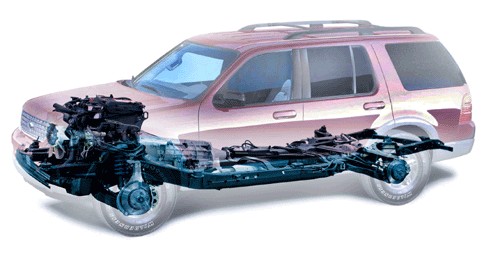The basic structure or shell is what holds the components of a vehicle for it to be called an automobile. The shell or frame as I can put it, acts as a support to the drivetrain, suspension system, wheels, tyres, steering system to name a few.
What are the types of frames?
* Body on frame (or Ladder frame)
* Unitized, Chassiless or Monocoque construction
Body on Frame (Pictured above)
The body on frame construction is applied only in bus, truck and other commercial vehicles. In passenger cars, the body on frame construction is slowly becoming obsolete. Usually the chassis or the skeleton which holds the steering, suspension, drivetrain, wheels, tires and accessories like fuel tank and others are used as a base to mount the body. The body is fastened to the chassis using clamps and bolts.
Unitized or Monocoque Construction (pictured above)
Unitized construction is simply a type of construction that combines the body and the frame into one entity. All modern passenger cars adopt this form of construction. Pillars, rails, sills and panels are all welded together to make a unitized frame.
Sub Frame -
At times, a sub frame might be used which holds the engine and transmission in place. The idea of the subframe is to isolate high frequency noise and vibrations from the cabin. The subframe is bolted to the main frame and inbetween, adequate padding it provided to absorb the disturbances.
Advantages of Monocoque construction -
* Reduction of weight reflects in better savings in fuel and tire maintenance.
* Lower manufacturing cost
* Better safety - the body is able to absorb the impact during a collision and distribute it in a more favorable manner. It gives more control to the design engineer.
* The body position obtained is much lower. This helps improve the stability of the vehicle.
Advantages of Body on Frame Construction -
* Frequent changes to body shape is easily carried out
* Accident repairs can be mended easily
* More durable and hence suited for vehicles used for off-roading







